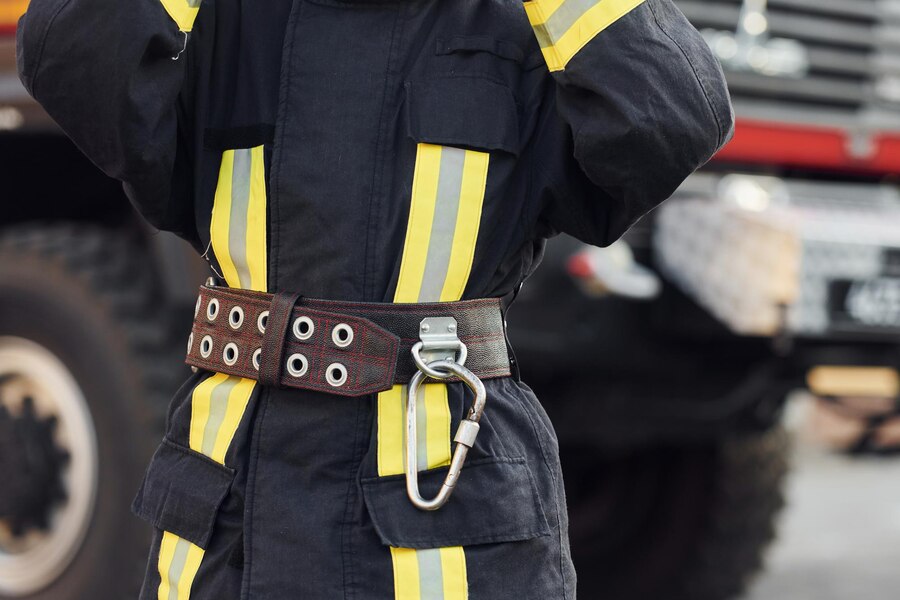Leather, a material with an ageless allure, has been used across centuries and sectors. Its robustness, flexibility, and adaptability make it a preferred choice in numerous applications.
This is particularly true in firefighting, where dependability and resilience are critical. Among the vital gear for firefighters, the leather radio strap stands out, exemplifying the timeless charm and practicality of leather.
Unmatched Durability in Extreme Conditions
Firefighters are often thrown into some of the most challenging environments. Their gear must withstand high temperatures, abrasive substances, and rugged use. It’s in these circumstances that the leather radio strap proves its worth.
Crafted from top-quality leather, these straps are designed to endure the demands of firefighting, offering a safe and readily accessible spot for a radio – an indispensable device for communication during crises. Unlike other materials, leather does not easily crack or fade, even when subjected to harsh elements. This durability implies that a leather strap can serve for several years, if not decades, with minimal upkeep.
User-Friendly and Comfortable
Leather radio straps also score high on their ease of use. They are engineered to glide effortlessly over turnout gear, ensuring radios and other accessories are always within arm’s reach. Furthermore, they secure the radio microphone, preventing it from swinging or becoming an obstruction during pivotal moments.
Comfort is another aspect where the leather radio strap excels. A well-constructed radio strap positions the mic comfortably on the chest, particularly for firefighters laden with backpack-style bags and other hefty equipment.
Shielding from Thermal Hazards: The Leather Radio Strap Advantage
A leather radio strap isn’t just a handy tool for communication; it’s also a line of defense against the thermal hazards firefighters face. When worn beneath the turnout coat, it offers several protective benefits:
- Strategic Positioning: The radio is located below the coat line, significantly less exposed to extreme heat and flames. This positioning not only maintains the functionality of the radio but also extends its lifespan.
- Upright Orientation: This strategic placement ensures the radio remains upright even when a firefighter crawls. It eliminates the need to fumble around for the device, making it easier to use and access in various situations.
- Thermal Resistance: Leather itself is a material known for its thermal resistance. It can withstand high temperatures without melting or deforming, protecting the radio from overheating or suffering heat damage.
- Insulation Properties: Beyond its heat-resistant qualities, leather also provides some insulation. It can help keep the radio stable, preventing rapid temperature changes that could affect its performance.
In essence, a leather radio strap is more than just a carrier for radio; it’s a shield against the intense thermal hazards that firefighters regularly encounter. This added level of protection further underscores why leather straps are such an essential part of a firefighter’s gear.
Read Also: Your Wrist, Your Chat: Setting Up WhatsApp On Apple Watch
Rugged Aesthetic Appeal: The Distinctive Charm Of Leather Radio Straps
Beyond their functional attributes, leather radio straps also carry a significant aesthetic appeal. Here’s why these straps are more than just practical gear:
- Timeless Elegance: Leather is a material that never goes out of style. Its classic appeal transcends trends, making it a timeless choice for professionals who value functionality and aesthetics.
- Rugged Charm: Leather straps have a rugged charm that embodies firefighting’s tough and resilient nature. This rustic look perfectly aligns with the image of bravery and strength that firefighters represent.
- Unique Patina: Leather develops a distinctive patina – a natural aging process that enhances its look. Each scratch, mark, or blemish adds to the strap’s character, making each unique and personal.
- Telling a Story: Leather straps carry the stories of their wearers. They bear the marks of fires battled, lives saved, and experiences shared. Over time, they become a testament to the wearer’s journey and achievements.
In short, the aesthetic appeal of a leather strap is a blend of timeless elegance, rugged charm, and personal storytelling. It is a piece of gear that serves a crucial role in a firefighter’s life and contributes to their unique identity and style.
Trusting The Timeless: Why Leather Radio Straps Are A Firefighter’s Best Ally
In conclusion, the timeless charm of leather and its durability and versatility make it the go-to material for firefighter radio straps. It’s not just about fashion; it’s about placing trust in a material that can endure the test of time and harsh conditions.
The leather radio strap is more than just an accessory; it symbolizes the resilience and bravery of those who don it. When it comes to reliable firefighting gear, there’s no doubt that leather stands unrivaled by time.
Learn More About:






















